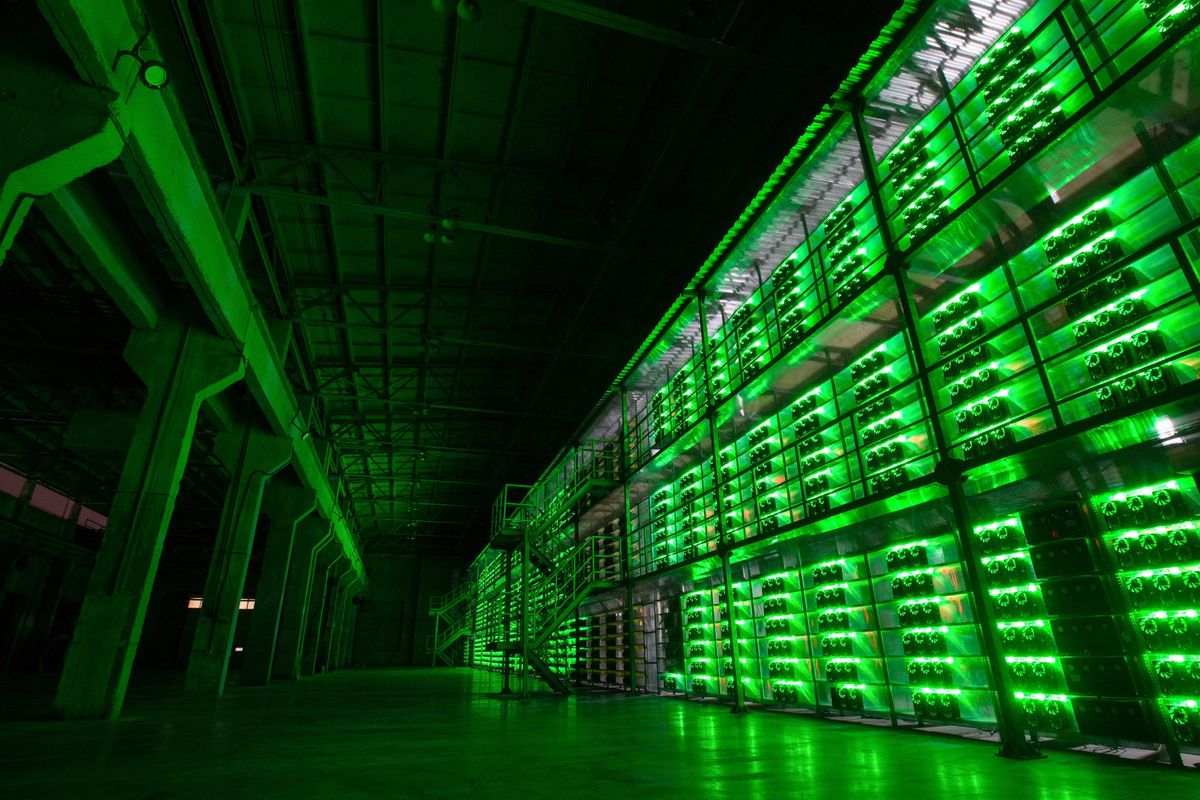Bitcoin Mining Power Reaches Historic High as Profitability Drops
07.04.2025 19:30 2 min. read Alexander Stefanov
Bitcoin's mining network has reached an extraordinary level of computational power, achieving over 1 Zettahash per second (ZH/s) for the first time.
This remarkable milestone highlights both a new peak in network security and a growing financial burden for miners.
The mining network’s hashrate briefly crossed the 1 ZH/s threshold on Friday, an enormous leap from the 1 EH/s level first recorded in 2016.
According to data from Glassnode, this new record surpasses the previous peak of 975 EH/s, which was set at the end of January. However, this achievement arrives at a time of market uncertainty, as Bitcoin’s price has recently dropped by almost 10%, falling to around $77,000. This decline is largely linked to economic instability, exacerbated by the latest round of tariffs imposed by President Trump.
In response to the increased hashrate, Bitcoin’s network difficulty has also seen a significant rise. Over the weekend, the difficulty level surged by nearly 7%, marking the most substantial adjustment since July 2024. The difficulty now stands at a record 121.5 trillion, as reported by Glassnode.
Bitcoin’s protocol automatically recalibrates the difficulty approximately every two weeks, ensuring that the time taken to mine new blocks remains consistent at around 10 minutes, regardless of changes in mining capacity. Over the past 17 adjustments, 14 have resulted in increased difficulty, indicating that despite the challenges miners face, participation continues to grow.
Yet, the financial outlook for miners is increasingly grim. Despite the positive signal of network strength, profitability has taken a hit. The hashprice, which measures earnings per unit of computational power, has plummeted to a historic low of $42.40 per EH/s per day. This downturn is driven by several factors, including increased competition among miners, a stagnant market for transaction fees, and Bitcoin’s recent price stagnation.
Although the higher hashrate suggests strong long-term security for the network, many mining operations, particularly smaller ones with higher operational costs, are under significant pressure to remain financially viable. As the network becomes more competitive, some miners may struggle to keep up, raising concerns about the sustainability of less efficient mining setups.
-
1
Metaplanet Nearly Doubles Bitcoin Holdings in Seven Weeks, Now Holds 7,800 BTC
19.05.2025 20:00 2 min. read -
2
Michael Saylor’s Strategy Expands Bitcoin Holdings Again, Adds Over $400M in Latest Buy
26.05.2025 15:54 1 min. read -
3
Central Banks Are Buying Gold, Not Bitcoin — Peter Schiff Says That Speaks Volumes
25.05.2025 8:00 2 min. read -
4
Why Robert Kiyosaki Believes Bitcoin Isn’t Just Money – It’s a Lifeline
25.05.2025 10:00 1 min. read -
5
Analysts See Bitcoin Eyeing $200K in 2025 as Bull Cycle Unfolds
25.05.2025 18:00 1 min. read
The Bitcoin-Cardano Bridge is Here: What it Means for DeFi
Cardano has launched Cardinal, a pivotal protocol aiming to bridge Bitcoin’s vast liquidity with Cardano’s decentralized finance (DeFi) ecosystem.
Bitcoin Nears Key Support Levels Amid Growing Market Uncertainty
Bitcoin’s price recently dipped to $100,000 but swiftly rebounded, climbing above $110,000 after renewed dialogue between the U.S. and China helped ease global market tensions.
Quantum Computing Won’t Kill Bitcoin, Says Michael Saylor
Michael Saylor, the executive chairman of Strategy and one of Bitcoin’s most outspoken supporters, believes fears over quantum computing are being blown out of proportion.
Cathie Wood Stands Firm on Bold $1.5M Bitcoin Target by 2030
While Bitcoin hovers just above $105,000, ARK Invest’s Cathie Wood isn’t backing down from her long-held view that the asset could hit $1.5 million within five years.
-
1
Metaplanet Nearly Doubles Bitcoin Holdings in Seven Weeks, Now Holds 7,800 BTC
19.05.2025 20:00 2 min. read -
2
Michael Saylor’s Strategy Expands Bitcoin Holdings Again, Adds Over $400M in Latest Buy
26.05.2025 15:54 1 min. read -
3
Central Banks Are Buying Gold, Not Bitcoin — Peter Schiff Says That Speaks Volumes
25.05.2025 8:00 2 min. read -
4
Why Robert Kiyosaki Believes Bitcoin Isn’t Just Money – It’s a Lifeline
25.05.2025 10:00 1 min. read -
5
Analysts See Bitcoin Eyeing $200K in 2025 as Bull Cycle Unfolds
25.05.2025 18:00 1 min. read


